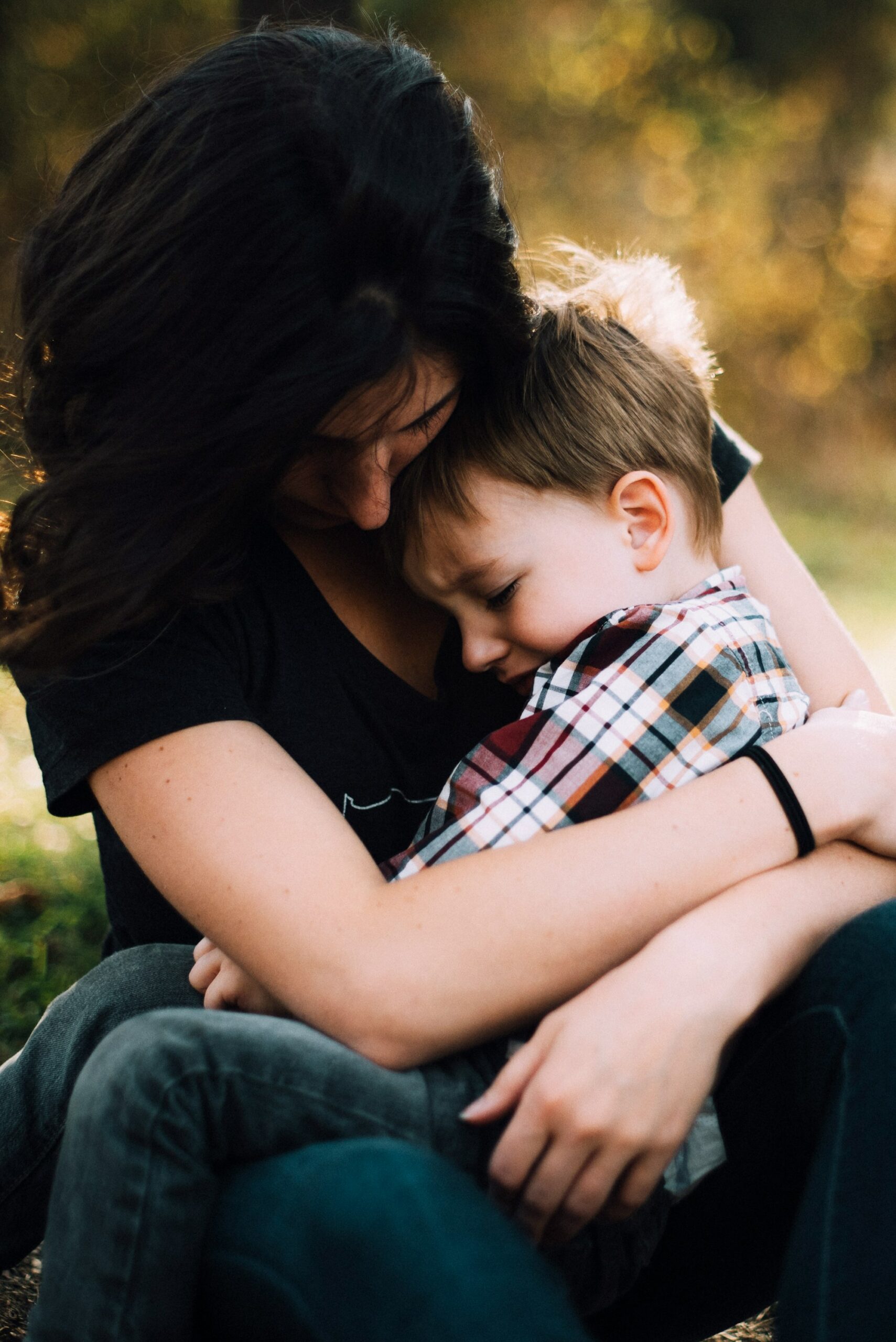Children’s emotional world is a swirling landscape—a single morning can bring laughter echoing through the house, sudden tears, the clatter of frustration, and the gentle quiet after a hug. For parents, witnessing this torrent can be both heartwarming and daunting. Teaching children to manage their emotions stands out as a pillar—foundational for healthy bodies, resilient minds, and harmonious relationships. How to help a child who breaks down at the slightest disappointment, or one who bottles up so much emotion they rarely express joy or sadness? Is emotional development innate, or something that can be cultivated methodically? Beneath the surface, questions abound: What if my child feels too much, or not enough? Will tantrums ever be replaced with reasonable words? What role do parents really play in teaching children to manage their emotions? In the chaos of daily life, is there a clear, evidence-backed path to follow? Medical research and experience, both, offer answers—sometimes simple, sometimes layered with nuance.
Why teaching children to manage their emotions matters
Everything starts early. Emotional regulation forms the backbone of both psychological stamina and physical wellbeing. Neurodevelopment studies have illuminated how the capacity to recognize and respond to emotions strengthens neural pathways, influencing the immune system, social relationships, even stress hormone balance. Left untended, challenges in emotional regulation increase risks for symptoms like persistent anxiety, behavioral upsets, and hurdles in learning or social engagement.
Resilience—the art of bouncing back from adversity—is not handed down at birth but lovingly shaped over time. Children schooled in emotional awareness are more likely to withstand setbacks, handle peer pressure, empathize, and develop confidence. Teaching children to manage their emotions thus supports not just academic achievement but robust, healthy living extending into adulthood.
Emotional regulation: What does it really mean?
From a neuroscientific lens, emotional regulation is the process by which the brain identifies stimuli, triggers hormonal responses, and channels physical changes—think racing heartbeats, blushing cheeks—into conscious reactions. For children, this skill grows gradually: first comes the ability to sense an internal state (such as irritation or excitement), next to label it (“I am angry”), and eventually to control behavioral responses appropriately (breathing deeply, asking for a break, or calmly stating their needs).
This maturation isn’t swift. Emotional self-control, medical studies have shown, reaches its peak only by young adulthood as the prefrontal cortex—the brain’s “command centre” for impulse control—is among the last to fully develop.
The function of emotions: Messages from the body and mind
Why do emotions exist? Evolutionary biologists explain: fear prepares the body for danger, joy motivates learning, and sadness signals the need for comfort or support. These reactions aren’t random—they’re sophisticated messages shaped over hundreds of generations. A child’s frown or giggle is much more than a fleeting state—it’s a physiological call for connection, an invitation for a parent to decode and respond.
Types of emotions: Primary to secondary, simple to complex
Primary emotions
Medical consensus recognises primary emotions—joy, anger, sadness, fear, surprise, and disgust—as universal. Even infants, only a few weeks old, track the facial expressions of those around them. Magnetic resonance imaging has illustrated how recognising these emotions lights up distinct brain regions, forming the template for all later social learning.
By six months: Joy, anger, and their companions are already present—each tightly paired with observable facial expressions. This mirroring process underpins much of a child’s early socialisation: the beam of a smile, the narrowed eyes of displeasure.
Secondary (moral) emotions
Some feelings, however, are far more nuanced. Secondary emotions—empathy, gratitude, shame, guilt, pride—develop as children’s self-awareness matures. Around 18-24 months, toddlers begin to sense not only how they feel, but how their actions affect others. These moral emotions are shaped by cultural context, family values, and everyday experiences.
One fascinating point: Toddlers are neurologically incapable of deep moral reflection, so expecting a two-year-old to “think about what they’ve done” is both unrealistic and potentially distressing. It’s not about excusing behaviour—rather, medical guidance advocates for clear boundaries and positive correction.
Learning to recognise and express emotions
Between ages one and eight, children move from basic recognition to more sophisticated emotional literacy.
Teaching children to manage their emotions in this stage means:
- Talking openly about different feelings (“Are you feeling sad today?”).
- Labelling your own emotional states, or those of storybook characters (“The rabbit looks worried—what happened?”).
- Encouraging role play—“What would you do in this character’s place?” This stimulates both emotional and cognitive empathy.
- Structuring cooperative games; sharing, turn-taking, and teamwork all highlight the way emotions impact group dynamics.
How parents and caregivers shape emotional health
Modeling and validation: The power of example
Children absorb emotional behaviours from their environment. A parent calmly expressing frustration and discussing coping strategies demonstrates mastery. Describing your own stress, how you deal with it, and the outcome, acts as a lived curriculum in emotional regulation. This is, in effect, teaching children to manage their emotions by example.
Safe spaces and open discussions
A predictable, nurturing atmosphere transforms the chaotic storm of childhood feelings into manageable ripples. Validating a child’s experience, even during tantrums (“I can see you’re angry. It’s okay to feel that way.”), fosters secure attachment and makes open dialogue the norm.
Reflective support
Every parent has their moments of overwhelm—recognising this, and transparently sharing calming techniques (breathing exercises, gentle music, physical comfort), allows children to discover what works best for them.
Building key skills for emotional regulation
A practical toolkit for teaching children to manage their emotions hinges on these pillars:
- Naming feelings: Build emotional vocabulary through questions, stories, and observation.
- Identifying triggers and physical signs: Teach children to sense their own bodily cues—clenched fists, stomach aches, accelerated heart rate—especially around stress or anger.
- Individualised coping strategies: From squeezing a soft toy to finding a quiet corner, techniques will vary per child. For children who are highly sensitive, adaptive aids (noise-canceling headphones, sensory boxes) offer vital relief.
- Consistency and patience: As in language acquisition or learning to ride a bicycle, mastery takes repetition, gentle correction, and space for trial and error.
Practical tools and methods at home
Visual prompts and “emotion zones”
Colour-coded charts (think blue for sadness, yellow for excitement, red for agitation) are straightforward but highly effective visual supports. Flashcards illustrating a wide spectrum of emotions can be handled, discussed, sorted.
Mindful practices and creative expression
Mindfulness isn’t an abstract concept—simple breathing exercises, slow counting, or guided imagery soothe the nervous system and reduce physiological arousal. Creative mediums—drawing, crafting, dramatic play—allow for safe emotional exploration.
Conflict resolution and “I feel” statements
By practicing phrases like “I feel sad when my toy is taken,” children learn to communicate needs rather than resort to aggression or withdrawal. Engaging in role-play around everyday dilemmas enhances problem-solving capacity.
Emotion coaching with stories
Narrate real and fictional mood changes. Discuss routes characters take to feel better or solve conflicts. Storytelling opens a window into alternative strategies.
Encouraging emotional conversations daily
“I feel” as a foundation
Regular, relaxed conversations about feelings—without pressure or expectation—help children normalise emotional expression.
Tailoring language to the child
Younger children benefit from concrete terms. As they mature, gently introduce more nuanced distinctions (“disappointed” vs “frustrated”).
Validation and listening
A child’s emotional world is valid, irrespective of adult logic. Consistently reflecting their feelings (“It’s upsetting when playtime ends, right?”) demonstrates acceptance.
Empathy and social awareness
Perspective-taking as a skill
Facilitate recognition of others’ feelings: “How do you think she feels?” in stories, at the playground, or during moments of conflict. Empathy is nurtured, not assumed.
Cooperative play
Board games, shared puzzles, and team-based tasks require children to sense, adapt, and sometimes negotiate emotional landscapes different from their own.
Special support for sensitive children
Recognising signs
Quick distress, withdrawal, hypersensitivity to changes—these signal a higher emotional baseline. Professional input may sometimes help identify underlying neurodevelopmental factors (such as sensory processing sensitivity).
Adapting strategies
Prioritise gentle routines, offer de-escalation spaces, and maintain low-stress expectations to allow sensitive children to flourish without being overwhelmed by the intensity of family or classroom life.
Emotional development through different ages
Toddlers and preschoolers
Immediate comfort—via touch, simplified language, or timely distraction—addresses emotional needs most productively. For preschoolers, structured routines and emotion labelling deepen regulation capacity.
School-age and adolescents
Gradually, children require autonomy to problem-solve, navigate friendships, and consider the ‘why’ behind their emotions. Parents can actively support early reflective habits and watch for sustained emotional struggles.
School and community influences
Collaboration with educators
Brief teachers about temperament traits, emotional triggers, or effective calming methods unique to your child. Many schools now include Social-Emotional Learning (SEL) programmes, which can reinforce what’s practiced at home.
Peer dynamics
Talk about everyday social tensions and friendships. Use role play and debrief after challenging playground encounters.
Overcoming everyday emotional hurdles
Outbursts and mood shifts
Emotional storms—meltdowns, abrupt mood swings—are part of natural child development. After an incident, dissect together what happened, explore if a routine adjustment or a new strategy is needed.
Preventing and managing overwhelm
Help children recognise early warning signs and take pre-emptive action: breathing, sensory breaks, or creative outlets. Routine, predictability, and a designated “calm space” offer vital anchors.
Monitoring and adapting support
Observing emotional progress
Look for growth—does your child use more words for feelings, recover from distress faster, or show empathy toward siblings and friends? Adjust your role: give more autonomy over time, step in only when required.
Avoiding negative reinforcement
Celebrate every effort and improvement. Withhold criticism or emotional distancing during difficult times; support breeds confidence.
Seeking help: When and where to turn
Watch for warning signs
Frequent, intense displays of emotion, social withdrawal, and loss of interest in favourite activities may suggest a need for professional input. Early intervention by paediatricians, counsellors, or psychologists can be life-changing.
Professional support
From cognitive behavioural therapy to play-based approaches, a wide spectrum of medical and therapeutic strategies exist for children and families experiencing persistent difficulties with emotional regulation.
Advocacy and collaboration
Be proactive: open conversations with teachers and doctors enrich insight, inform assessment, and create a web of support for long-term health and resilience.
Key Takeaways
- Teaching children to manage their emotions lays the ground for healthy relationships, school success, and robust wellbeing.
- Parents’ actions—calm modelling, open discussions, and consistent encouragement—are powerful tools in daily life.
- Each child is unique: adapt strategies, respect sensory needs, and embed emotional skills into family routines.
- Peer interactions, educators, and professional input may amplify your child’s progress.
- Consistency, patience, and empathy—repeated day after day—equip children for life’s emotional landscape.
- For custom advice and free health checklists for children, download the Heloa app.
Questions Parents Ask
How to help a child express emotions in words if they are not very verbal?
You might notice your child expresses more through actions than speech. Gentle aids like colourful emotion charts with faces, interactive storybooks, or drawing sessions create space for feelings to surface without heavy reliance on words. Try offering cards or toys symbolising different feelings; let your child choose the one that matches their mood. Every small step towards verbalising emotions is a milestone in teaching children to manage their emotions.
Are there simple tools or resources for teaching emotional regulation at home?
Absolutely! Visual flashcards, emotion thermometers, and printable checklists are simple ways to start. Setting up a “calm zone” with soft cushions, colouring material, and sensory toys creates a safe place for your child to unwind. Easy breathing practices or energetic “shake off” dances can reset moods. Regular practice during peaceful moments helps these strategies kick in when big feelings appear.
My child gets very overwhelmed in noisy or crowded places. Is this normal and how can I help?
Many children are more emotionally responsive to external stimuli. If your child feels unsettled by loud environments, prepare them with advance explanations and familiar comfort objects. Noise-canceling headphones or planned quiet breaks can be extremely helpful. Over time, supporting your child in identifying early signs of overwhelm and practicing a routine for “what to do next” will build both assurance and independence.









